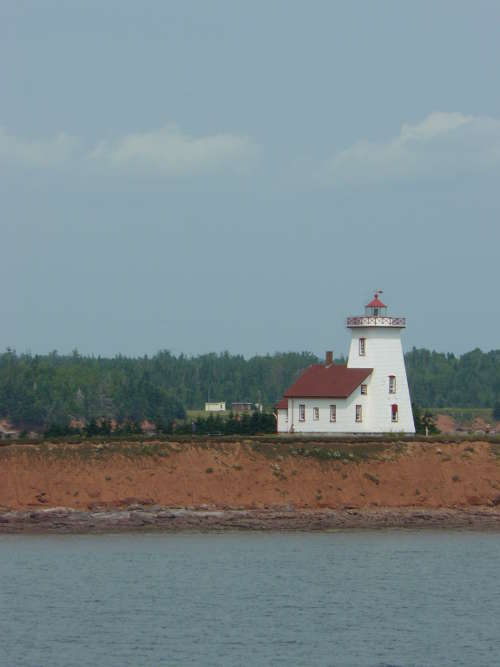 Location Taken: Off the eastern coast of Prince Edwards Island
Location Taken: Off the eastern coast of Prince Edwards Island
Time Taken: July 2012
Prince Edwards Island is the smallest of the Canadian provinces, one single island in the Gulf of St. Lawrence. It is a pretty large island, though, and an unusual one.
It’s also, by far, the most domesticated place I’ve ever been.
It’s covered with farms and small towns, with tame little forests scattered around. Even the National Park on the island is just a coastal park, with most of its attractions being historical sites and beaches. The largest city is really quite small, only about 35,000 people, with no skyscrapers and a downtown that could fit in any farming town anywhere on the continent. Everywhere you go, you see people or their works, quite different from the wild unpopulated forests of Nova Scotia’s Cape Breton Island, just 40 miles to the east.
It’s the soil, really.
Seriously, you see that deep rust-red color in the picture, in the cliff underneath the picturesque lighthouse?
That’s a sign of dirt that’s just chock full of iron. And that iron gets into the potatoes and other crops grown on the island, and it gets into the milk and cheese produced by the local cows, and it gets into every other thing grown on the island in general.
And it makes them all taste really really good. They’re also healthier than otherwise identical products made elsewhere, thanks to the nutritional benefits of iron. But mostly the benefit is in the taste.
The best potatoes I’ve ever had were grown on Prince Edwards Island. If you’re used to fast food fries, you tend not to think of potatoes having a taste beyond blah, which admittedly works quite well when fried. But these potatoes didn’t need to be fried, or covered in gravy, or smothered in butter. They worked quite well on their own.
The best ice cream I’ve ever had was also made on this island, though only some of the benefit is from the local milk. Cows uses an absurdly high fat content, and a very slow mixing process that gets as little air into the ice cream as possible. That means just one spoonful of their ice cream is more flavorful than a scoop of regular ice cream, and just about as filling. But the extra iron helps form a firm base for the flavor to work off of.
So with all the benefits of crops grown there, I guess its no surprise that the island is covered in farms, making the most of it all.
It did seem quite odd after a week filled with multi-hour boat rides and a long drive across the mostly-uninhabited central portion of Newfoundland, and then bam, civilization. It was almost creepy, really, in that “this is not how the world was” sort of way.
